
Assessment is a tangible process where a recruiter evaluates candidates to fill in an opening. The end goal is to hire the best job-fit candidate effectively and quickly. Therefore crafting an ideal assessment although seems a tedious job may work out in your favor after all.
Sometimes these minutely crafted skill assessments may still bring out a rather irrelevant and trifling crowd and waste your time. To help reduce this pressure of biases, we have introduced the skill test insights that give you exactly what you want out of a pool.
1. Score Distribution
This graph helps to fish out a set of candidates scoring close to the average marks from a pool of Appeared candidates.
By calculating the Mean and Standard Deviation on the data of candidates by using a formula, we can indicate how many candidates are spread out in relation to the average score (aka the formation of a bell in the graph). Please refer to this link to understand the calculation done for standard deviation and mean.
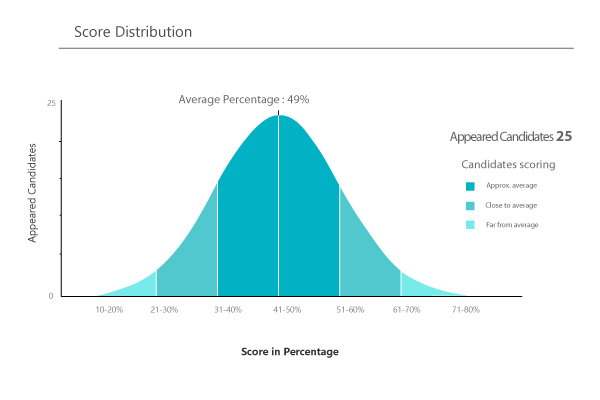
How it works –
Let’s take an example to understand the graph above.
Candidates appearing for a test: 10
Candidates scoring in the range (0-40%): 3
Candidates scoring in the range (41-70%): 5
Candidates scoring in the range (71-100%): 2
The accumulation of candidates is formed in the range of 41-70% as the Test average is 60%, and the curve is formed in the center.
That means: This skill test is working nicely for you! 5 candidates have scored close to the Test average of 60%. There is no harm in considering the candidates in the specified section for interviews.
- If the bell is skewed towards the right side of the graph, then the test seems more than healthy as the candidates are scoring too well.
- If the bell is skewed towards the left side of the graph, then it seems like an alarming situation as the candidates are not scoring that well.
2. Section Analytics
Know which section works best to extract the potential candidates. The sectional analysis helps you figure out the sectional average with respect to the Test average.
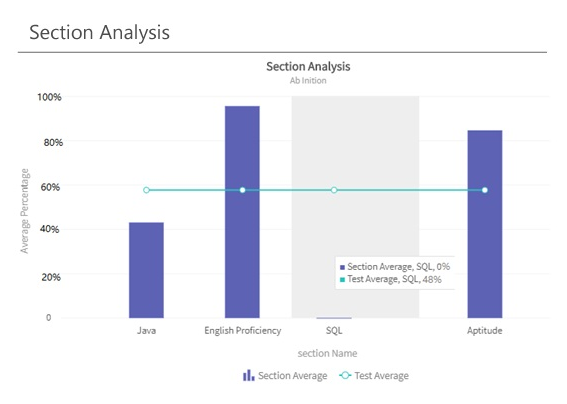
- The section where the average percentage of candidates is below the Test average must be looked into as it may seem to be a rather difficult section or it may have insufficient time with respect to the rest of the sections.
- The section where the average is high than the Test average must be working well or sometimes too well, and you might need to look into the composition of the section to check if it’s way too lenient.
- If all the above points seem okay, then great! You got yourself an awesome Test!
3. Candidate Feedback
First impressions matter! Experience is one of the most talked-about buzz words, and it creates a huge impact when it comes to a company’s brand and quality. For recruitment, the candidate experience is the first step towards company branding and also is the last impression on the candidate’s mind.
Know the real-time experience of your candidate through these 3 emoticons and work on the test composition to increase the count of the green one.
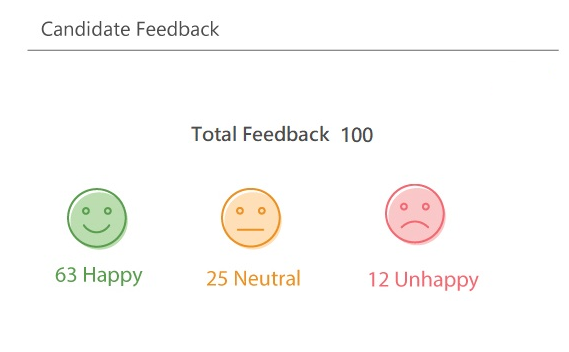
4. Candidate Pipeline
A way to visualize your hiring progress in iMocha is, from the number of invitations sent to the number of appeared candidates till the skill test is marked as complete. The end of the pipeline describes the conversion ratio to a new hire.
The pipeline can track the candidate’s stage of progress and helps in identifying obstacles if any. Check out these points which might be the reason why you’re losing candidates.
- The verbiage used in the invitation may not intrigue the candidates enough to appear for the skill assessments.
- Candidates lose interest if way long texts are involved.
- Adding a skill in an assessment that is irrelevant to the job description may create a negative feeling and demoralize the candidate easily.
If you got the above points skimmed then Ta-da! You got your shortlisted candidates for the interviews.
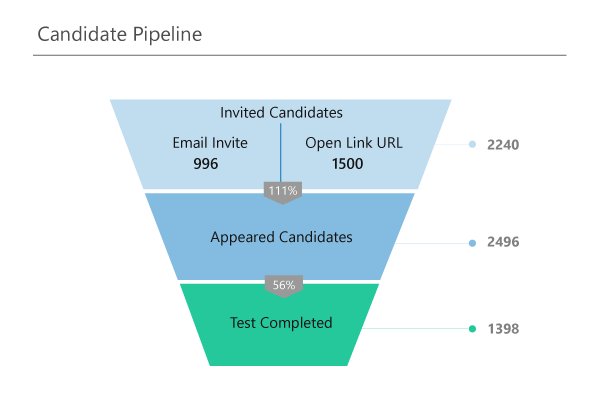
5. Test Status
Status informs you that the skill assessment attempted by the candidates is marching through multiple phases and will soon reach the final stage of Test Completion.
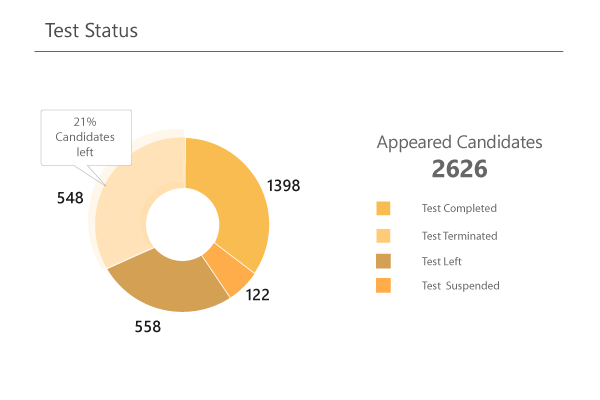 Many a time setting up the assessment does not mean the journey will go smoothly, and this chart gives a bird’s eye view to the recruiter to know whether there is any gap seen while the candidate attempts the test. The hiccups observed may be due to the following reasons:
Many a time setting up the assessment does not mean the journey will go smoothly, and this chart gives a bird’s eye view to the recruiter to know whether there is any gap seen while the candidate attempts the test. The hiccups observed may be due to the following reasons:
- The Test is Terminated if malicious activities are observed. (Window violation or Image violation)
- The Test is Suspended if the Test could not be started due to a Technical Error.
- Test Left status is seen when the candidate has voluntarily left the Test.
The Recruiter can always give a second chance to the candidates by allowing Test Re-attempt if the above reasons seem misjudged.
6. Candidate Performance
Nowadays, the candidates seem very glib when it comes to addressing an interview, and we feel we got the right hire until the cracks start to show.
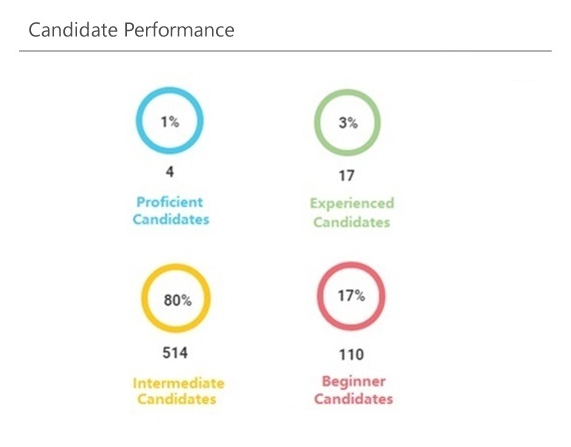
As many candidates may seem perfect overall, but not all are skilled for that particular topic which we are looking for. A big advantage of the right performance category is setting up a baseline to filter out the hire you exactly need. Know your employees before you hire them out of a fitting bountiful crowd.
Talk to our test experts to know how to increase your skill test's health, contact nidhi@imocha.io.

